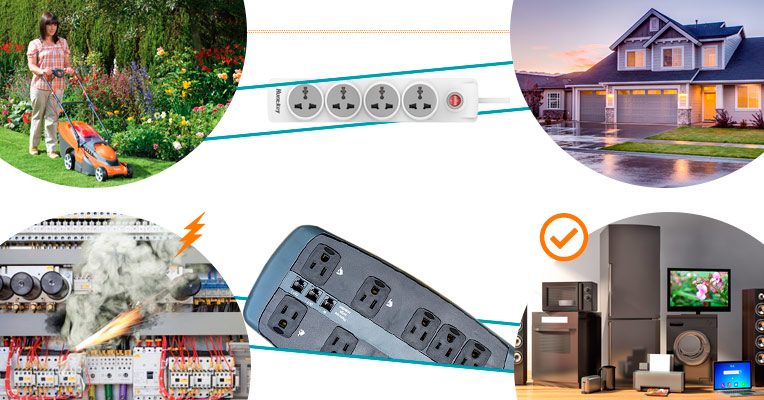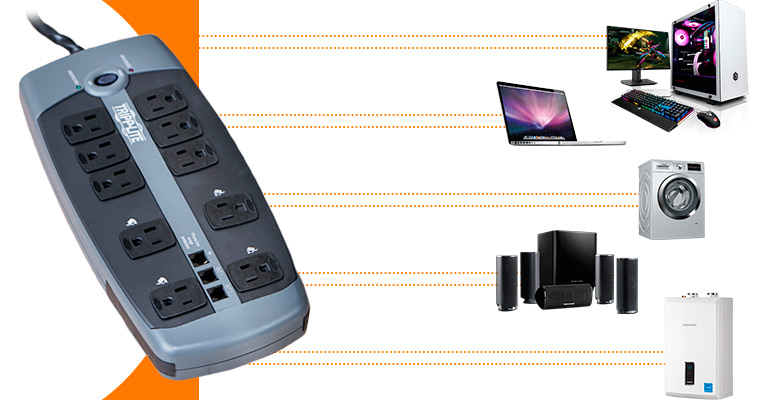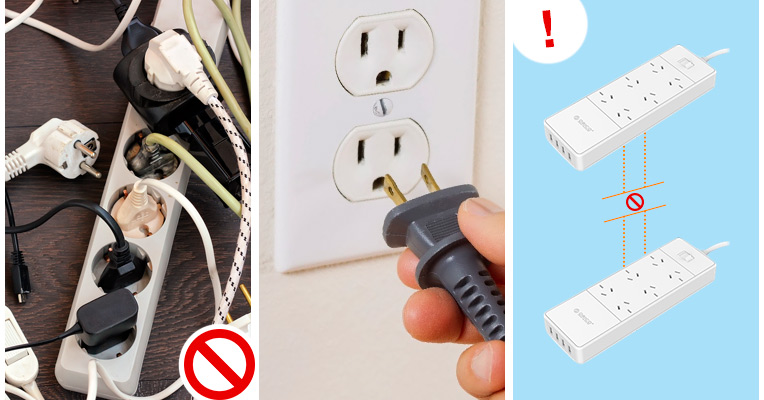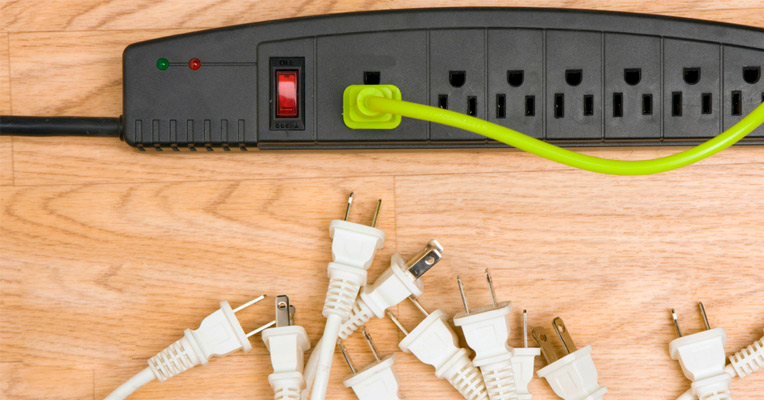At first glance, these two devices seem very much alike. Both the power strip and the surge protector consist of a plastic housing with an outlet and a cord with a plug that connects to the mains. The only external difference between these two devices is the presence of a power button. But, this difference is very conditional, because manufacturers of electrical equipment have introduced models of extension cords with power switches.
Therefore, first of all, it is necessary to understand that the surge protector is not a power strip with a button. And in general, the biggest difference between an extension cord and a power strip is not in the presence of a button. This is a complex device. If it was only a button, then you’d be right to wonder why these devices are several times different in price?Well, the first difference between an extension cord and a surge protector is the cost, with the power strip usually being a lot cheaper than the surge protector. Of course, you might ask the question: "Why pay more if I do not see a particular difference between the two devices?"
Because a power strip in its design is a little different from the most common wall outlet. More precisely, this is the outlet, only in a slightly different way. In modern homes, the sockets are connected one by one by a single wire. The same wire connects all the sockets of the outlet.
Thus, the main difference is in the internal structure of these devices.
The power strip is completely identical in design to a stationary outlet. The purpose of the extension cord is to increase the distance between the source and the power consumer. For example, you need to connect power tools to work on the balcony, in the yard, or in another place where there are no stationary outlets nearby. In this case, an ordinary extension cord would be the perfect solution to the problem. The only thing you need to pay attention to is the matching of the power of the extension cord and the total power of the connected electrical appliances.
The surge protector, in addition to the convenience of connecting electrical appliances, performs the functions of short circuit protection and high-frequency interference in the general electric current network.
It is also important to understand that the surge protector is not a voltage regulator. It does not stabilize the voltage, so it doesn’t protect against voltage surges. At sudden surges of voltage, the fuses built into the equipment are burned out. At best, you’ll have to replace the fuse, at worst - buy new equipment. The surge protector is equipped with a special fuse, which is able to protect your equipment from high-frequency oscillations in the electric current supply network.
The best surge protectors are the most expensive, but also the most functional devices. Their main task is to protect the equipment from network failures like power surges or electromagnetic and radio frequency interference. The sensitive equipment must only be connected to the sockets by means of a surge protector. These are the devices that come equipped with sophisticated electronic circuit boards.
These types of devices and appliances include:
- computers and monitors,
- laptops,
- washing machines,
- home theaters,
- gas boilers.
In the event of a power failure, the protector takes the first blow at itself and, in the extreme cases, it may even sacrifice its own fuses. The equipment receives a voltage that is free from interference and jumps. This helps to avoid the problem of broken pixels on the displays, damaged electronics boards, and lost data on laptops.
We would also recommend going with a surge protector when it is necessary to organize an "IT corner" in one point of the room and simultaneously connect a monitor, system unit, multifunction units, router, a charger for the tablet PC, and a phone.
The more expensive and more sensitive the piece of equipment is, the better the protector should be.
This is not a random question as many buyers do not know how to distinguish the extension cable from the surge protector by their appearance. When looking for a surge protector, most people are guided only by the appearance of the device, but the looks can be deceiving. To avoid buying a simple power strip instead of a protector, it's worth to look at the manufacturer.
Buying a surge protector, choose a good product from well-known manufacturers. Pay attention to the quality markings, such as "CE": With this method, you’ll have an almost 100% chance of acquiring a proven and reliable tool.
Generally speaking, you’d be better off with a smaller product, and try not to take a device without a technical passport. If the accompanying document describes all the characteristics and the company trademark is available - it is just about all that you need to get yourself a good tool. You may be tempted to choose the cheaper option but Inexpensive goods can often play with you a malicious joke by poorly performing the tasks assigned to them.
Also, you need to take into account the main characteristics. You can be offered surge protectors for home use or for office applications. There are also universal models, optimized for both home and office.
The quality of the product is indicated by the number of outlets, the presence of a fuse, and the indicator of serviceability of the protector. You can find home-friendly protector with a 180-centimeter wire, or buy it with a 5-meter length of the electrical wire, which is convenient for spacious working rooms.
Strictly speaking, electricians recommend doing it without extension cords, and to lay as many stationary outlets as possible in the room. But you won’t always have such an opportunity. And, of course, it's almost impossible to do without surge protectors. You ought to be careful when using it, so pay attention to the following:
- Do not connect too many devices to the power strip. Each device has the maximum power which should not be exceeded. This information is usually indicated near the on/off switch or on the bottom in joules for a power strip.
- Especially powerful devices should not be connected to the network through a protector - they should be connected directly to the outlet. Typically, the nominal power can be found on a sticker with specifications on the back or bottom of electrical appliances.
- And one more important thing, surge protectors cannot be connected to each other while power strips can be connected safely.
It is necessary to have a prudent master eye and elementary electrical skills in order to safely use tees, extension cords, and surge protectors. It is also important to choose a quality product as only good electronics can bring the desired satisfaction for long years.





